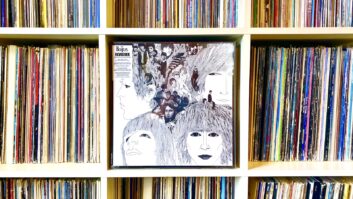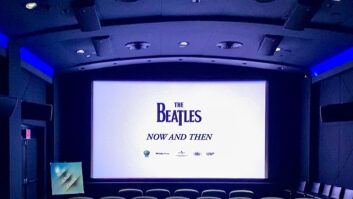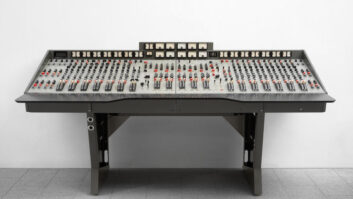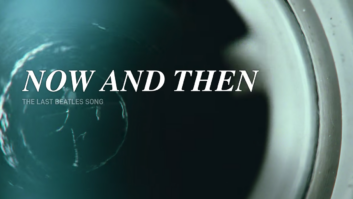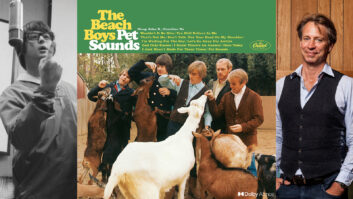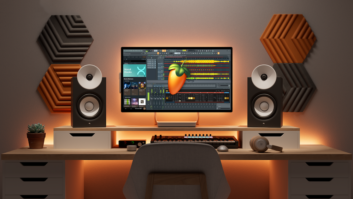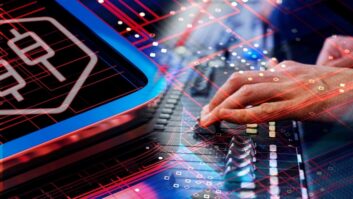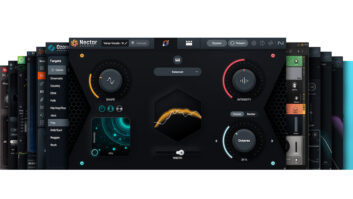ANAHEIM, CA — The culmination of more than a year of research, equipment acquisition and recording, EASTWEST has brought the Fab Four Virtual Instrument — unaffiliated with or endorsed by Apple Corps. Ltd. or the Beatles — a faithfully executed, incredibly accurate and comprehensive collection featuring the same kind of instruments and recording equipment used by the Beatles to create their music to composers. EASTWEST exhibited the Fab Four Virtual Instrument at NAMM 2008.
“The Beatles had a profound impact on me musically,” said EASTWEST founder and Fab Four producer Doug Rogers, “and were the influence for my fascination with sounds. They were musical geniuses that never rested on their laurels, always producing exciting new music and sounds with each new record, much of it groundbreaking!
“Putting this project together took well over a year of research, equipment procurement (much of it from collectors), and gathering a team that could pull off such a feat,” Rogers adds. “But it was a labor of love for us all, and the result is truly worth it.”
The Fab Four Virtual Instrument project involved several people intimately involved with the Beatles. Engineer Ken Scott, who worked on Beatles albums including A Hard Days Night, Help, Rubber Soul, Magical Mystery Tour, and The Beatles (White Album), engineered the recordings. Guitarist Laurence Juber and drummer Denny Seiwell, both of whom were members of Paul McCartney and Wings, played the same kind of instruments as those used by the Beatles.
No expense was spared in acquiring the equipment used to produce this collection. Much of that equipment, ironically, is now housed in EASTWEST Studio 3, where the Beach Boys‘ legendary Pet Sounds–the inspiration for Sgt. Pepper’s Lonely Hearts Club Band, according to Paul McCartney–was recorded.
Well over one million dollars‘ worth of rare period instruments — including authentic guitars, basses, drums, and keyboards — as well as amplifiers, microphones, recording consoles, outboard equipment and tape recorders were used in this production. Neumann, AKG, Cole and STC microphones as used at EMI/Abbey Road Studios were used to capture the sounds, while identical amplifiers, including a 1963 Voc AC30, 1967 Fender Showman and DeLuxe, 1963 Fender Bassman and Tan Showman, and 1966 Vox Defiant, 730 and 7120, were used with the electric guitars.
The same kind of recording desks and preamps, including a very rare EMI REDD tube desk, EMI TG12345 desk, and EMI REDD47 preamps, were used to record all instruments, through Fairchild limiters and rare EMI RS124 modified Altec compressors, which were used for dynamics control. As with many of the Beatles recording sessions, a Studer J-37 4-track tube tape machine was used to record everything.
Guitars (some costing over $200,000 each) played by Juber include a Gretsch Firebird (1959) and Tennessean (1963), Rickenbacker 360-12 (1965), Martin D-28 (1966), Fender Stratocaster (1956) and Telecaster (1951), Epiphone Casino (1965), and Gibson Les Paul Goldtop (1957), SG (1960) and J200 (1966). Juber also played Hofner (1963) and Rickenbacker (1964) basses, the same kind as Paul McCartney played on the Beatles‘ recordings. Guitars were sampled with up and down strokes, multiple velocities and picking styles, some with chords and effects.
Drums played by Seiwell include a rare 1960 Ludwig downbeat kit with Zildjian cymbals (snare 5″ x 14″/toms 9″ x 13″ and 16″ x 16″/kick 22″ x 14″/Zildjian 20″ crash ride/18″ crash medium/14″ hi-hat). Additionally, drums were all multi-sampled with up to 16 velocity layers, left and right hand. The sounds were all matched to a particular style (e.g. “A Day in the Drums,” “Ticket to Drums,” “Yer Drums”). Even some heavily modulated cymbals, recorded through a Fairchild limiter for authenticity, were recorded as an alternative cymbal sound.
Keyboards include Baldwin Electric Harpsichord (“Because I’m a Harpsichord”), Clavioline (“Baby I’m a Clavioline”), “Madonna Piano” (Steinway B Piano/ADT), “Lucy in the Lowery,” “Strawberry Flutes,” “We Can Work a Harmonium,” and other stringed instruments including “Swarmandel Forever.”
Most of the sounds would be impossible to create without all of the above
equipment. For example, the “revostortion” guitar sound was created by feeding an Epiphone Casino into one EMI REDD 47 preamp, and the output into a second EMI REDD 47 preamp, exactly as originally created by the EMI/Abbey Road engineers.
Fab Four Virtual Instrument also includes a software version of ADT (artificial double tracking) with built-in tape simulator, created and programmed specially for this project. All instruments are newly recorded multi-samples for this collection; no sounds came from any Beatles recordings.
Fab Four Virtual Instrument carries a MSRP of $395.00 (plus tax).
